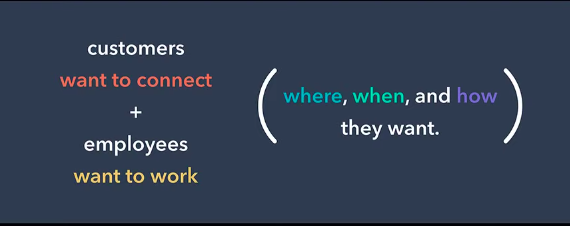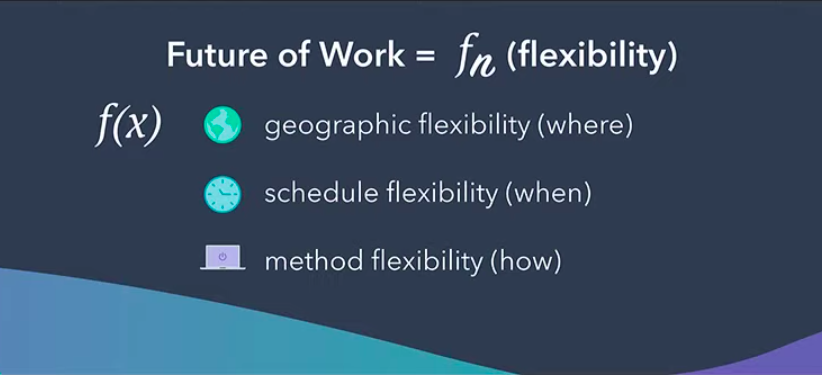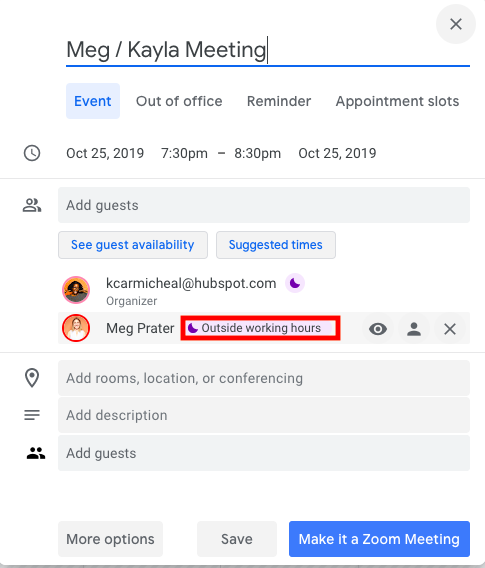People are changing the way they work. The root of this change is the growing acceptance of flexibility in the workplace. So, when we talk about the future of work, we have to focus on what’s influencing change.
Sitting in a cubicle from nine to five decked out in business casual is no longer considered the office norm. Did you know that 50% of the workforce has adopted a "casual dress" rule?
What has been found is symmetrical value between how customers want to connect with the businesses they support and employees who want to work for the businesses they support. This aligns with flexibility.

The future of work is finding that happy medium of meeting both employees and customers where, when, and how they want. Let's look at how flexibility is going to assist in this concept impacting the workplace.
Why Workplaces Are Changing
Workplaces are updating some rules, such as dress codes, because employers recognize that being comfortable optimizes performance. A 2019 survey by Randstad found that 33% of workers would quit their jobs if they were forced to follow a strict dress code, in favor of prioritizing comfort at their jobs (even over a $5k increase in salary).
In his 2019 INBOUND keynote, HubSpot's co-founder and Chief Technology Officer, Dharmesh Shah, touched on how workplaces are evolving and how to adapt as a company.
"If you want to attract that star talent, you have to make changes that are in high demand," he said.
In the video above, Shah mentions that 200 of the world's biggest CEOs have changed their mindsets from deciding that a company's only purpose is to serve shareholders to a company having three purposes: delivering value to customers, generating value to shareholders, and investing in employees.
According to Shah, companies have two products: one for customers, and one for employees.
He explains "So, what's one of the most valuable features people look for in this product? Flexibility."
These changes are happening rapidly and showing up in worker demand for geographic, schedule and method flexibility, as shown in the slide below:

As long as employees are creating customer value, companies can adapt their culture to fit the needs of both. Shah explains that even though the changes are scary and unnatural, they're essential to creating a company culture employees are excited to be in.
Areas Impacted by Flexibility
When looking at where work and workplace culture is shifting, we're seeing more specialized job opportunities, thus, more specialized skill sets.
Instead of a marketing company hiring a marketer who will run email marketing campaigns, write website copy, and also contribute to a blog, they're hiring a writer whose main function is to blog, run email marketing campaigns, or write website copy.
Startups or SMBs that don’t have the budget to hire a team of specialized workers are increasingly looking into freelancers, contractors, or virtual assistants who have that specialized skillet at a more attractive price. The number of people turning to freelance opportunities is growing as well; 57 million people are now freelancing, as opposed to 53 million in 2014. The increase could be due to the ease and normalization of virtual work.
Let’s look at a few of the factors that are increasing the popularity and adoption of remote work:
1. Location
Remote work is growing in popularity. 23% of the workforce is remote — a 4% increase from 2016 during which time people have reported spending at least some time working remotely. MarketWatch estimates that due to video, 50% of the workforce will be remote by 2020.
Services like Skype and Zoom allow remote employees to take part in their office culture by calling into meetings or holding virtual ones of their own. To illustrate, my team is comprised of remote and in-office employees, so about half of my weekly meetings happen through video. I haven't found communication to be difficult or unreliable, which can be two common fears when incorporating the possibility of remote workers.
2. Schedule
The normal workday is typically 9 AM to 5 PM. But by including the possibility of remote workers — and employees whose best productivity are outside of those hours — fluid schedules are increasingly attractive to companies and workers alike.
To illustrate, I work best in the morning. I usually begin my workday at 8 AM and end around 4 PM. Some of my colleagues start earlier and leave earlier or start later and leave later. Either way, the work we’re assigned gets done.
Giving employees the option to choose their own hours relieves the pressure of having to shift personal preferences in order to fit into strict guidelines. It also relieves the pressure of coming in a little later if something goes wrong during the commute on any given day.
3. Method
This is the "how" aspect of the future of work. How is work getting done in the future of the workplace, with all this flexibility?
Well, the answer to that question is: virtually. Though the spirit of collaboration is still embraced by companies — and should be — it lives online. Online calendars provide ways for employees to schedule meetings that cater to the preferences of teammates.
Below, you can see that when I try to schedule a meeting with fellow HubSpotter Meg, I’m notified that this meeting falls outside Meg’s normal working hours.

The ability to visualize when coworkers are available to meet, collaborate, and work is made possible with calendar apps, like Google Calendar, that integrate with video services.
With online meetings, software, and apps, work is more accessible than ever before, providing a flexible work environment.
Factoring in a relaxed work code into your organization means the future of work isn’t being run by technology but aided by technology. It's run by what employees want for their ideal office culture to contribute the best work they can to customers who feel the same way.
from Marketing https://ift.tt/36gUVdR
via
No comments:
Post a Comment